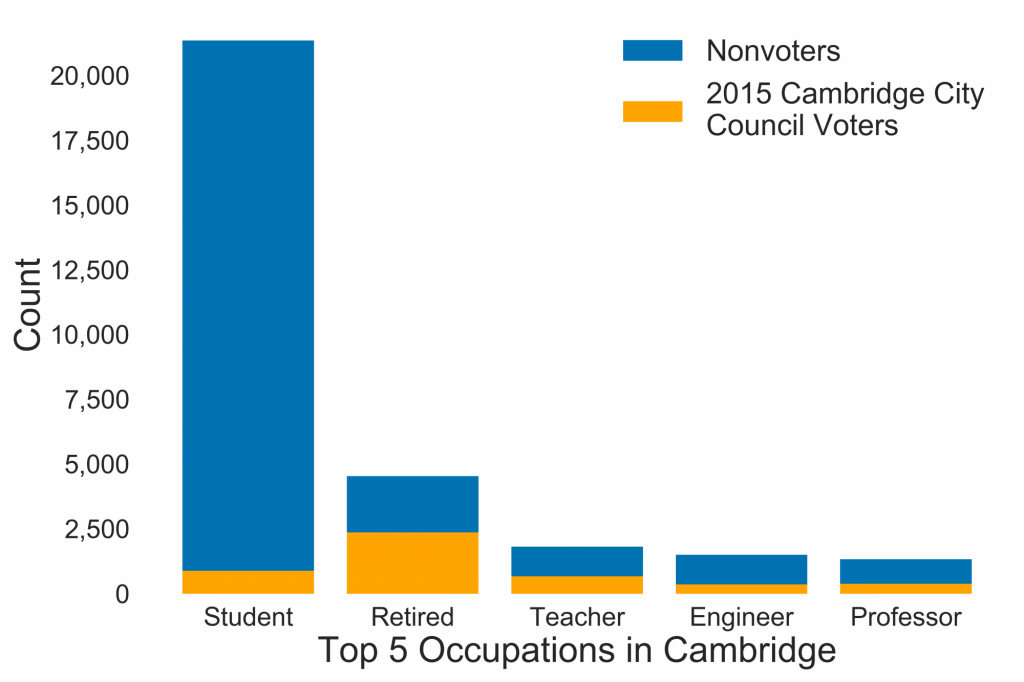Why vote in 2017?
Boston, Cambridge, and Somerville all have local elections this year on November 7. And while much attention is devoted to national elections, city governments arguably has a greater impact on many aspects of life that students interact with directly every day: rising rent, the convenience and safety of transportation options, and environmental policy.
But in spite of the large number of students and young people in the Boston area (the median age in Cambridge is around 30), our issues and opinions are largely ignored due to the composition of who actually votes in these local elections:

But this can change. In Cambridge, for example, winning candidates receive less than a couple thousand votes, and the margin between winning and losing candidates can be as little as dozens of votes. Because local turnouts are generally so low and the size of the eligible MIT student population is so great, even modest gains in student turnout could swing elections.
Ready to do your part? Learn where and how to vote, and then read up on the candidates.
